Exploring the Quantum Center
On a virtual tour of the Quantum Center in 2021, we visited our member groups. Once a week, we shared a picture of one of the groups and their research focus on Twitter. The posts are compiled on this website.
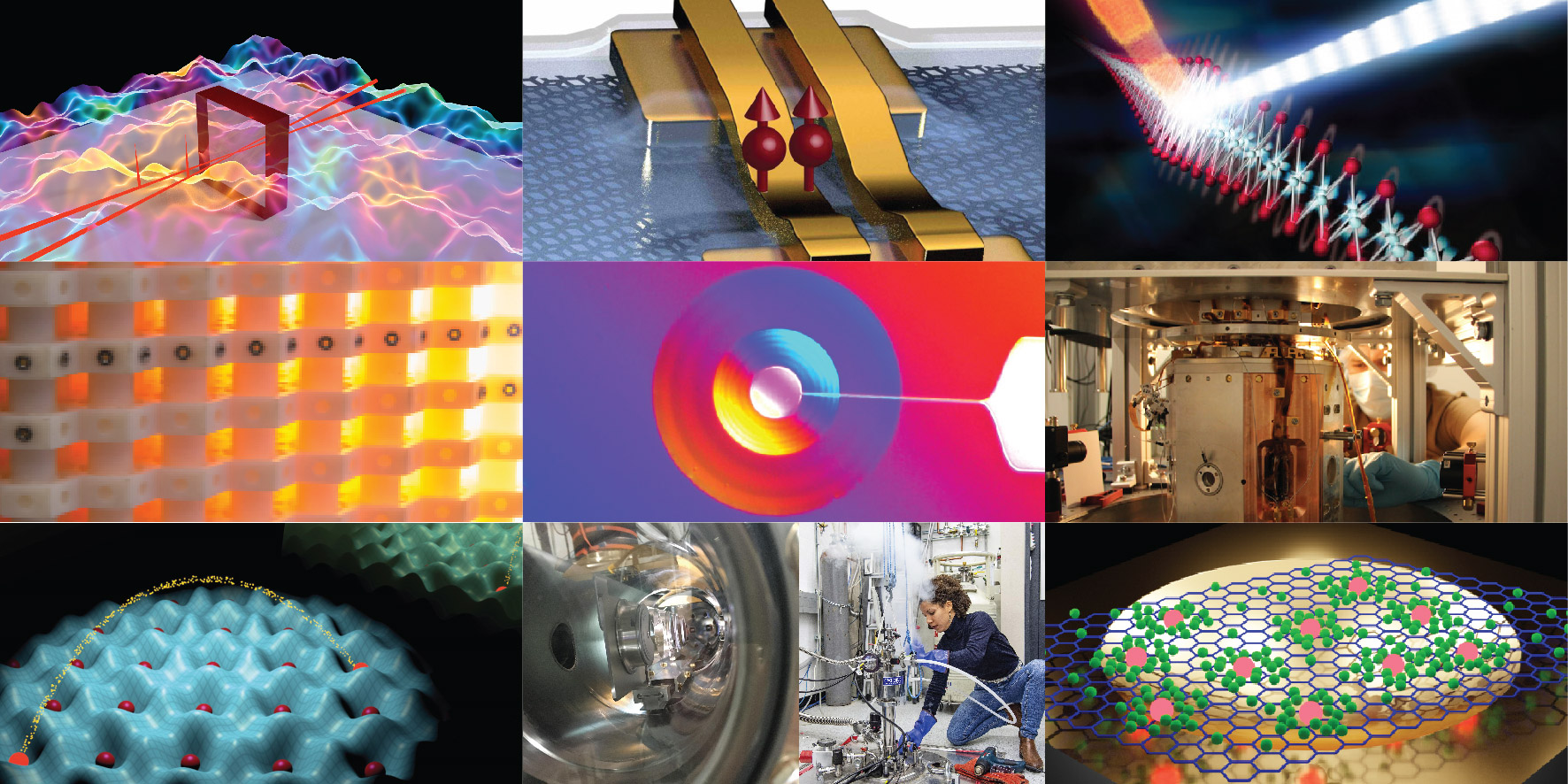
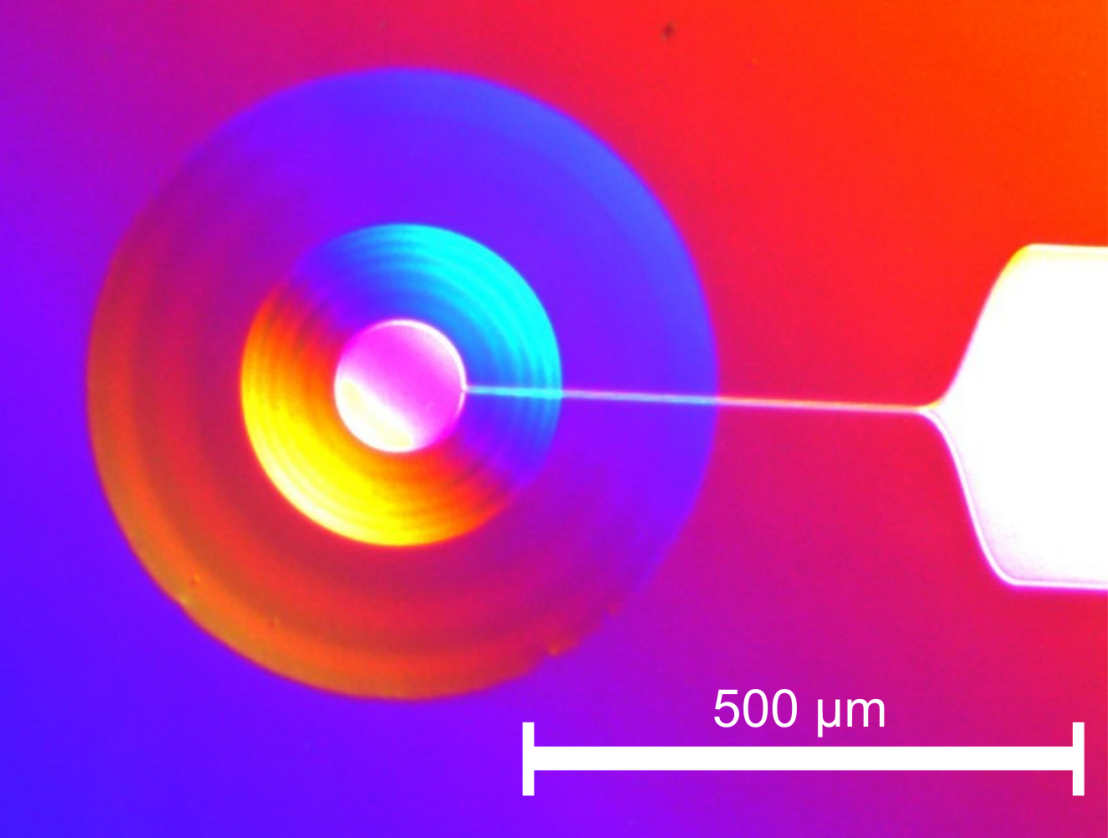
The group works on interfaces between quantum states of sound and other systems like superconducting circuits or optical photons. The image shows the Newton rings of the dome-shaped surface of an acoustic resonator, above which the antenna from a superconducting transmon qubit is placed to allow coupling via the piezoelectric effect.
Hybrid Quantum Systems group website
Research Areas: Basic Science, Quantum Communication, Quantum Computing, Quantum Sensing
Reserach Approaches: Experimental
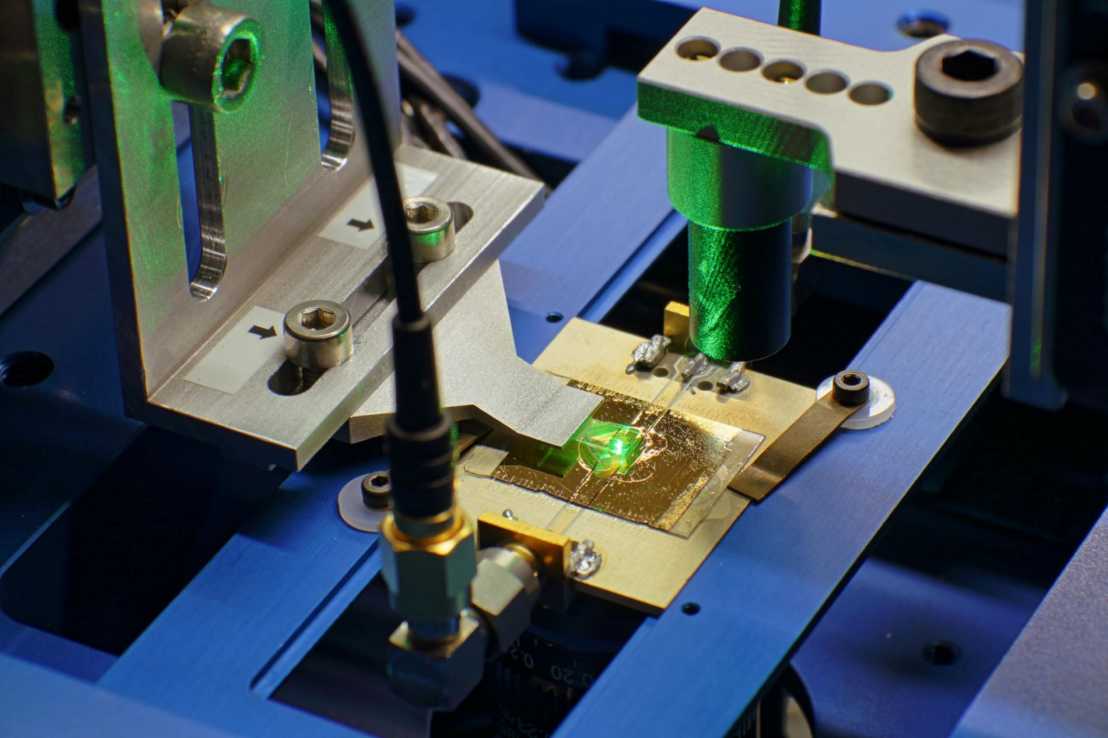
The group develops nanoscale magnetic imaging technologies based on nitrogen–vacancy (NV) centers in diamond for quantum science, spintronics and more. The image shows the optical pumping of a diamond sample with NV centers that can be initialized and read-out at room temperature using simple optics. Manipulated by light and microwave pulses, this single-spin system allows sensitive detection of nanoscale magnetic fields.
Research Areas: Quantum Sensing
Research Approaches: Engineering, Experimental
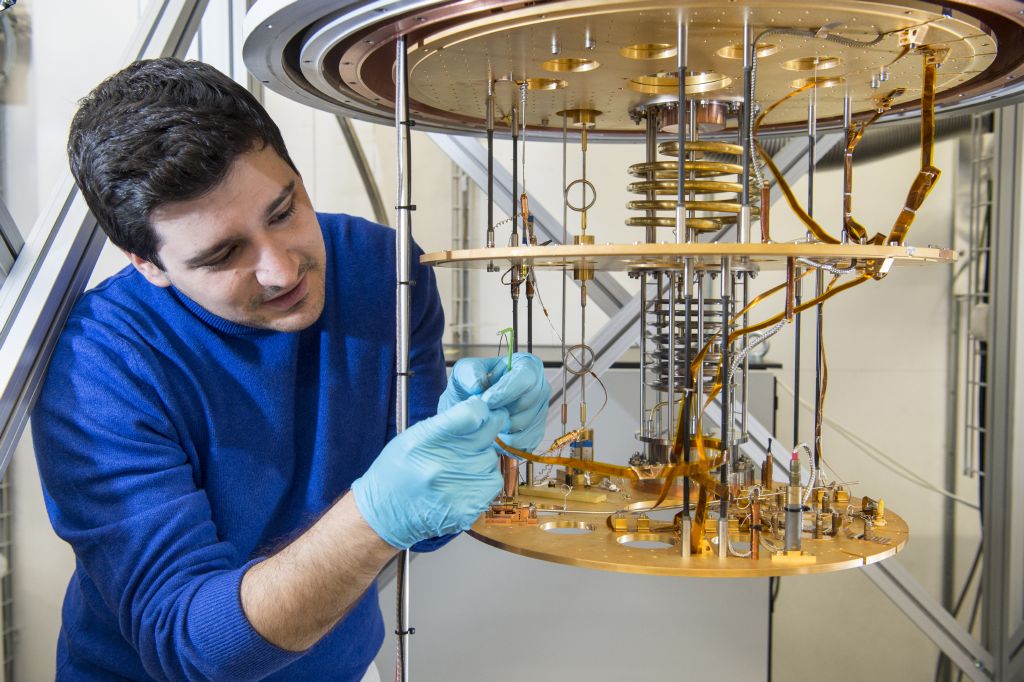
In the photo, PhD student Giorgio Nicoli builds a semiconductor quantum dot into a dilution refrigerator with a base temperature of 3.5 mK. Such ultra-low temperatures are required to investigate new quantum states of engineered devices in view of their potential for novel qubit architectures.
Ensslin Nanophysics group website
Research Areas: Basic Science
Research Approaches: Experimental
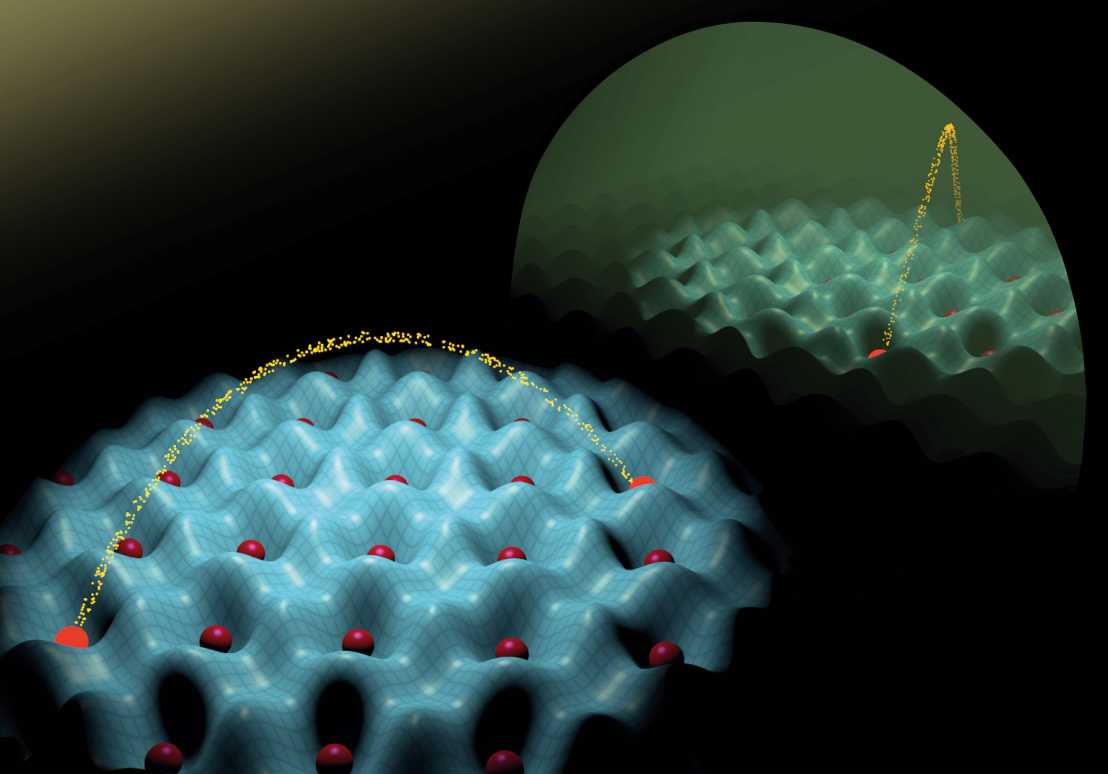
The Quantum Optics Group uses ultracold atomic gases to synthetically create and explore key models in quantum many-body physics. The image shows an artistic view of atoms interacting over long range via the exchange of photons in a cavity.
Research Areas: Basic Science, Quantum Simulation
Research Approaches: Engineering, Experimental
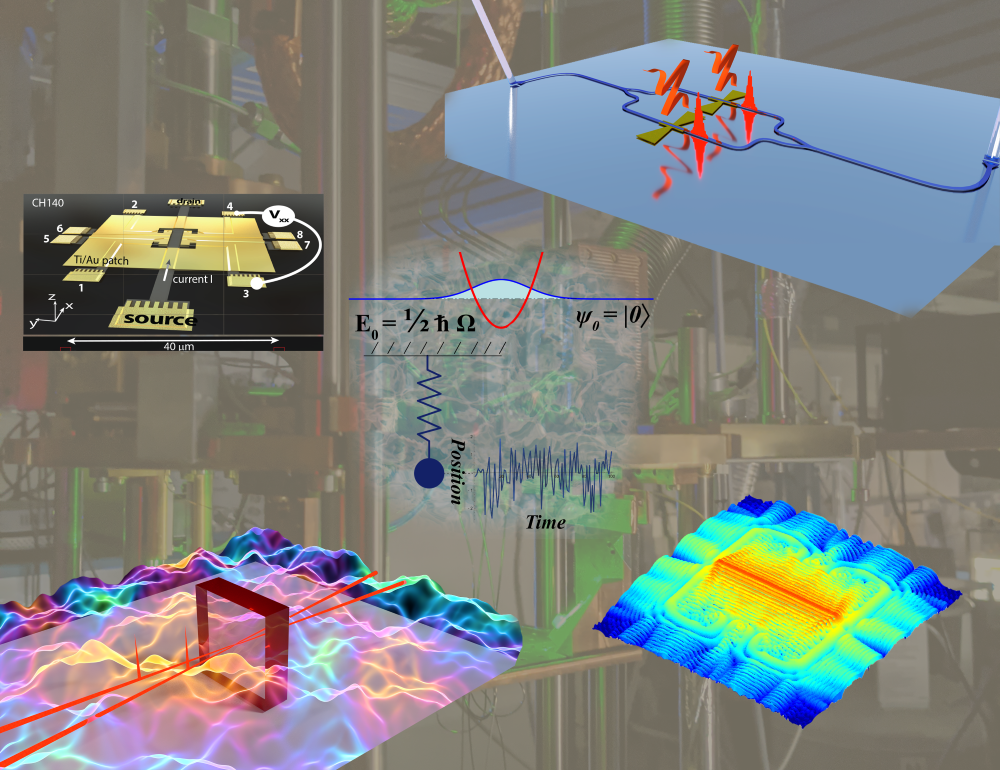
The group engineers the properties of the vacuum field with metamaterial-based cavities. They measure its field correlation, and look at the effect of the vacuum field on transport and transmission properties. They also study on-chip architectures with subcycle temporal resolution and high sensitivity.
Quantum Optoelectronics group website
Research Areas: Basic Science, Quantum Sensing
Research Approaches: Experimental
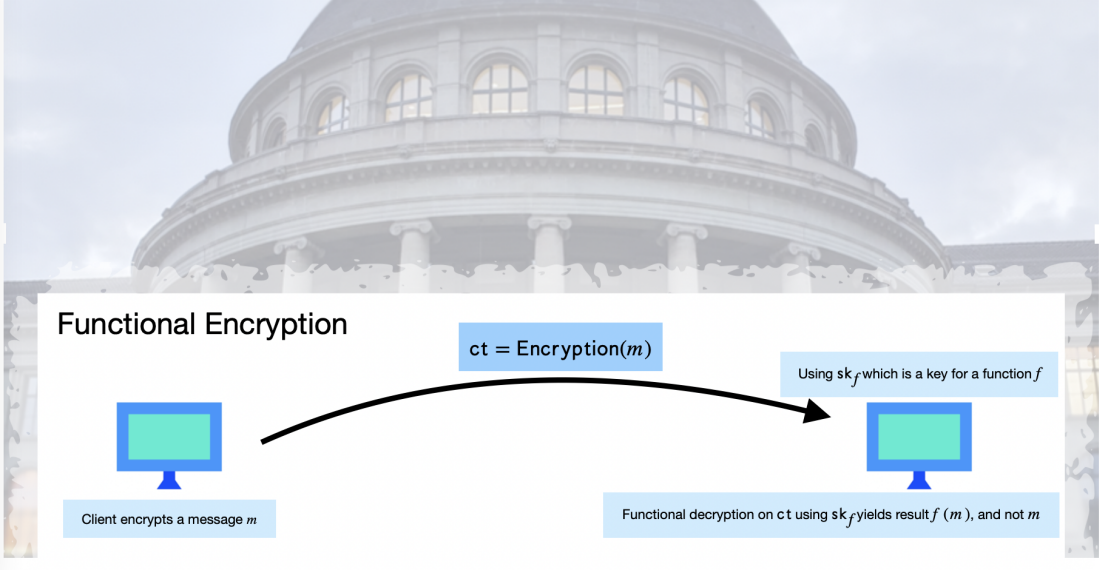
The group investigates cryptographic schemes which are secure against quantum computers. Of particular interest is functional encryption. This is a primitive which allows partial decryption of ciphertexts. In functional encryption, decryption enables to compute functions f(m) of the original message m that was encrypted, rather than recovering the original message m itself.
Foundations of Cryptography group website
Research Areas: Basic Science
Research Approaches: Theoretical
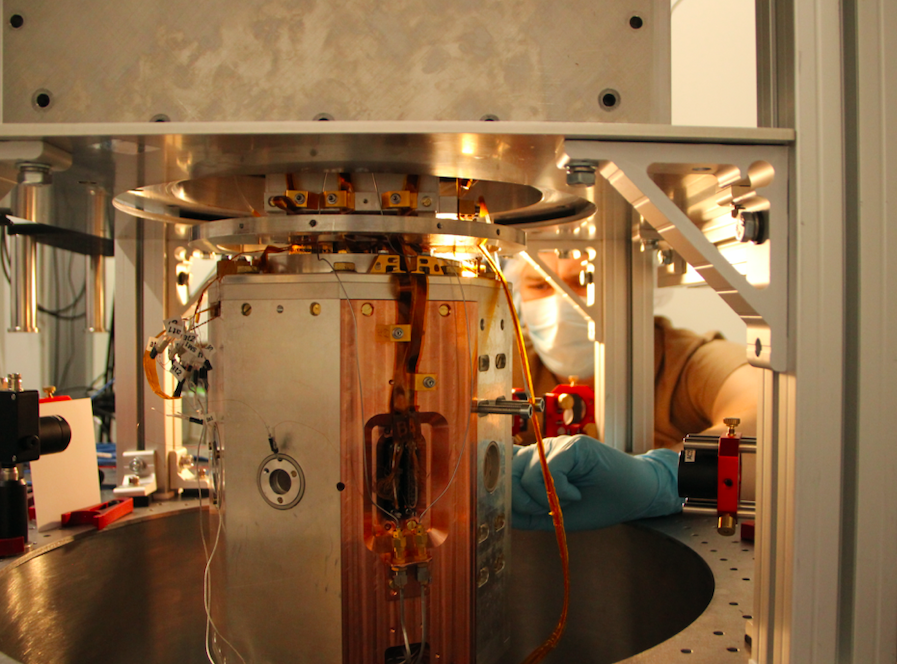
The group focuses on investigating experimentally the role of information in quantum mechanics, and on developing new methods for quantum state generation and quantum information processing with ions. The image shows one of their cryogenic vacuum chambers. Within it a small trap is used to hold ions in space thanks to electric fields, and laser beams are used to initialise, compute and readout the qubit states.
Trapped Ion Quantum Information group website
Research Areas: Basic Science, Quantum Computing, Quantum Sensing, Quantum Simulation
Research Approaches: Engineering, Experimental, Theoretical
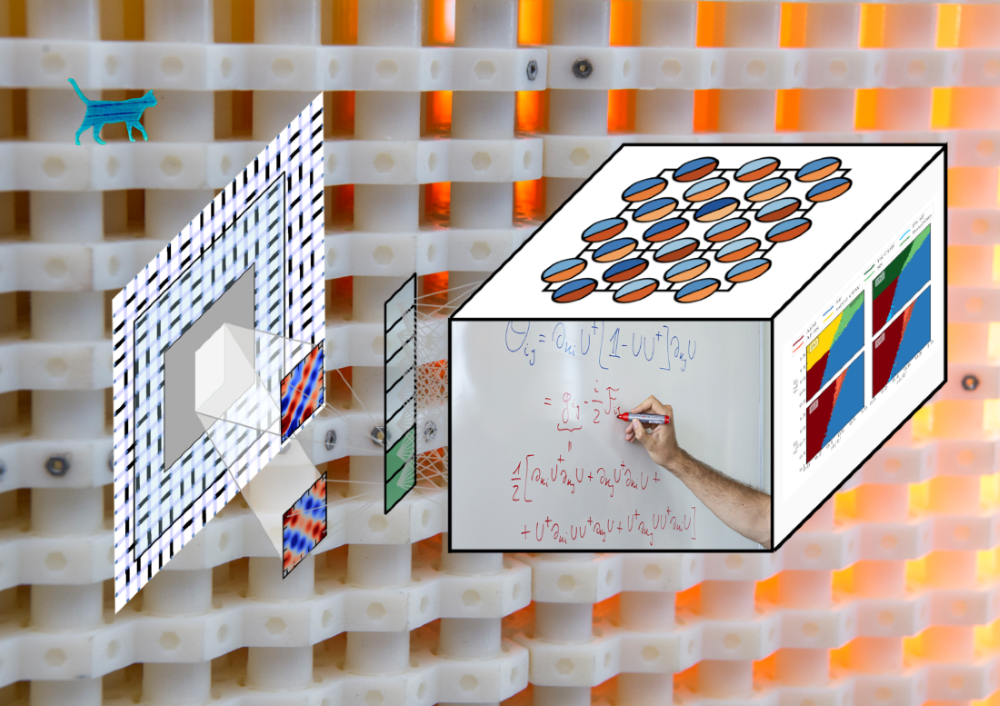
The group tries to make sense of condensed matter systems, relying on their own, as well as on artificial intelligence. They cherry-pick intriguing problems, which they take to their lab and investigate with mechanical resonators at vastly varying scales, ranging from nanometers to meters.
Condensed Matter Theory and Metamaterials group website
Research Areas: Basic Science, Quantum Simulation
Reserach Approaches: Experimental, Theoretical

The Group develops and applies physics-based models to shed light on the behaviour of nanoscale devices. The image shows the leakage current flowing through a defected h-BN oxide layer.
Computational Nanoelectronics group website
Research Areas: Quantum Simulation
Reserach Approaches: Computational
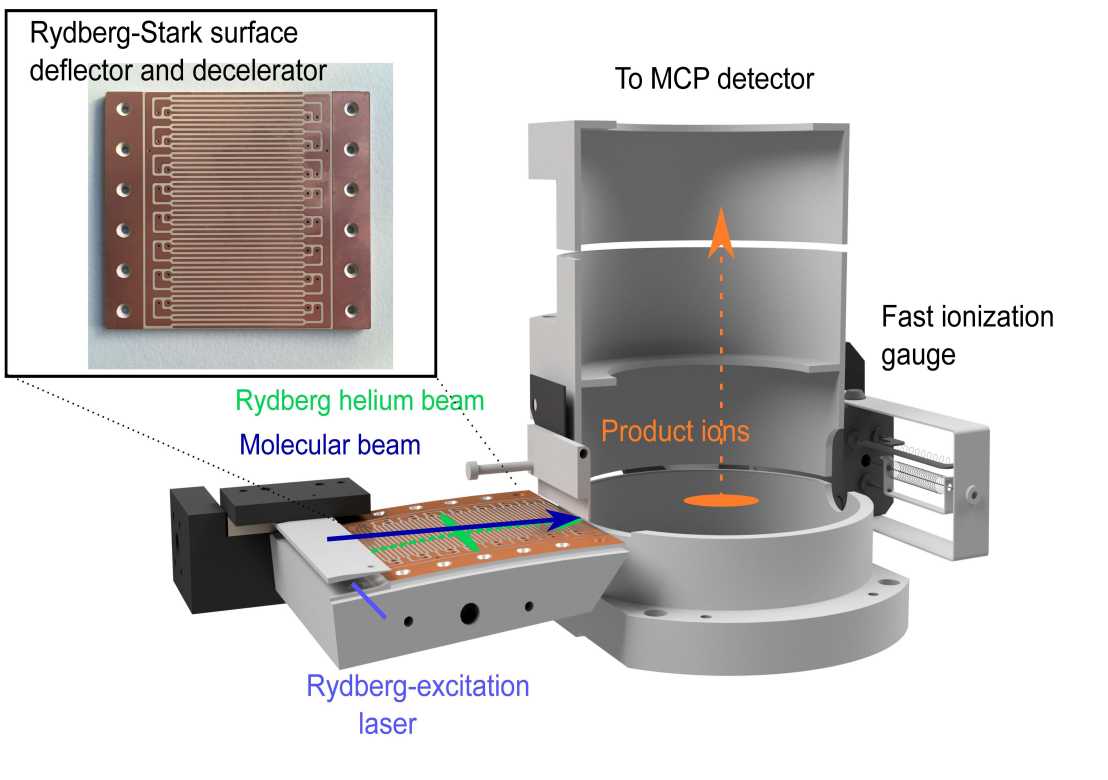
The reactions between the helium ion and simple molecules are very important for the synthesis of more complex molecules in the interstellar medium. One of the research topics of the group is to study these reactions by exciting helium atoms to a high Rydberg state. The Rydberg electron shields the ionic helium core from stray electric fields without influencing the ion-molecule reaction taking place within its orbit.
Molecular Physics and Spectroscopy group website
Research Areas: Basic Science
Reserach Approaches: Experimental, Theoretical
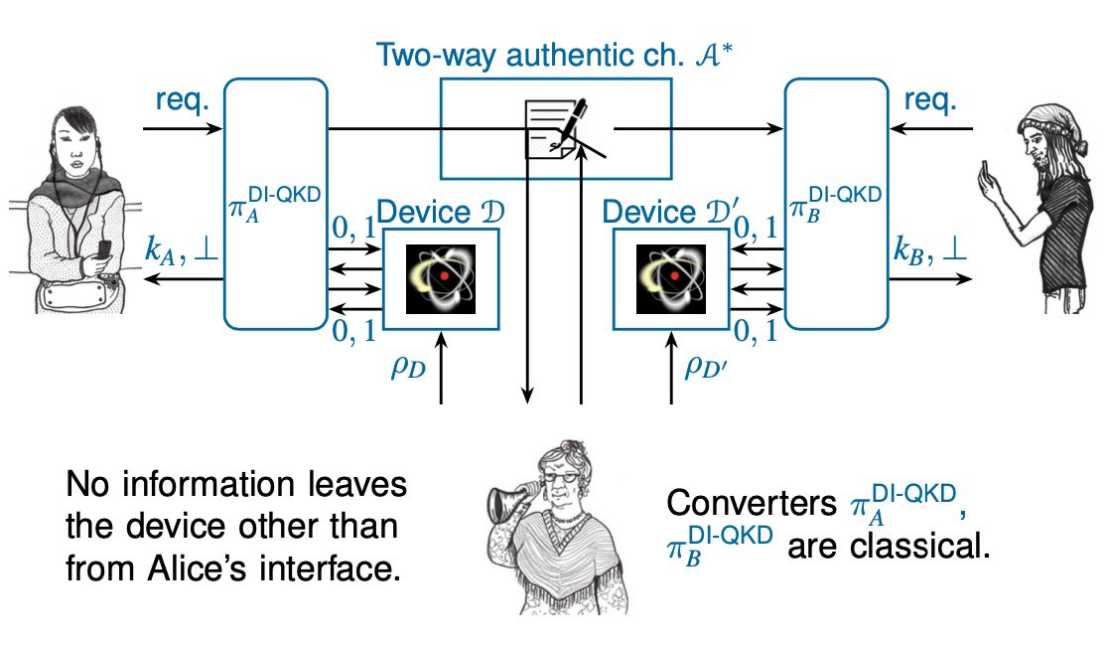
The Information Security and Cryptography group modelf rigorous analysis of cryptographic settings, even in the presence of quantum agents and adversaries, or when we can't trust our devices.
Information Security and Cryptography group website
Research Areas: Basic Science
Reserach Approaches: Theoretical
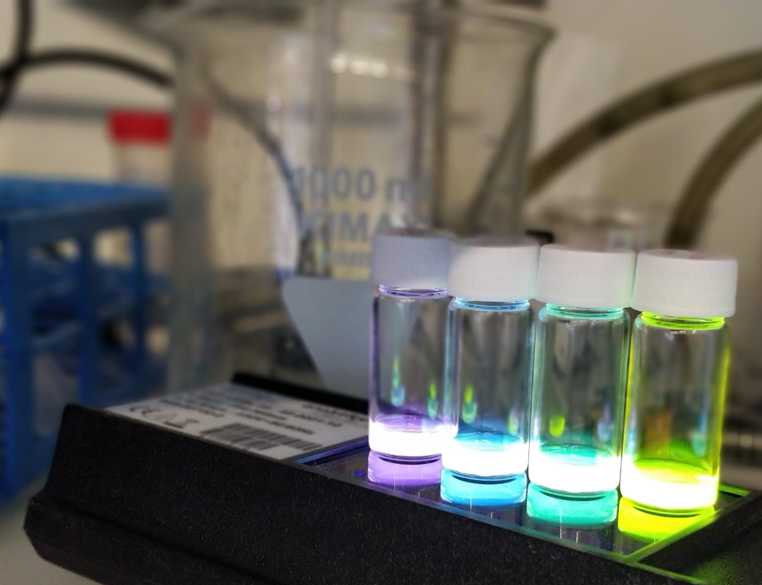
This picture depicts some magic-sized nanocrystals that were synthesized. Their different colours arise from their different sizes, a phenomenon known as quantum confinement. The Optical Materials Engineering Laboratory is studying the synthesis of these discretely growing nanocrystals in order to develop better control of the synthesis of nanomaterials.
Optical Materials Engineering Laboratory website
Research Areas: Basic Science
Research Approaches: Engineering, Experimental
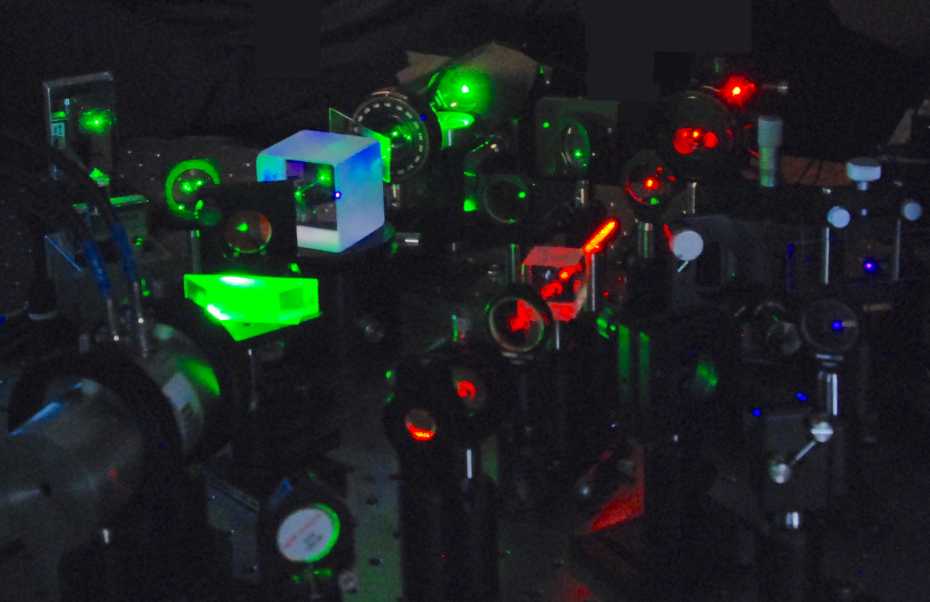
The Photonics Lab focuses on science and technology development in the fields of optoelectronics and optical sensing. On the one hand, they use nanoscale materials to generate and control light, on the other hand, they use light to investigate and control nanoscale systems, such as levitated nanoparticles in ultrahigh vacuum. The image shows an optical spectroscopy and displacement measurement.
Research Areas: Basic Science, Quantum Sensing
Research Approaches: Engineering, Experimental
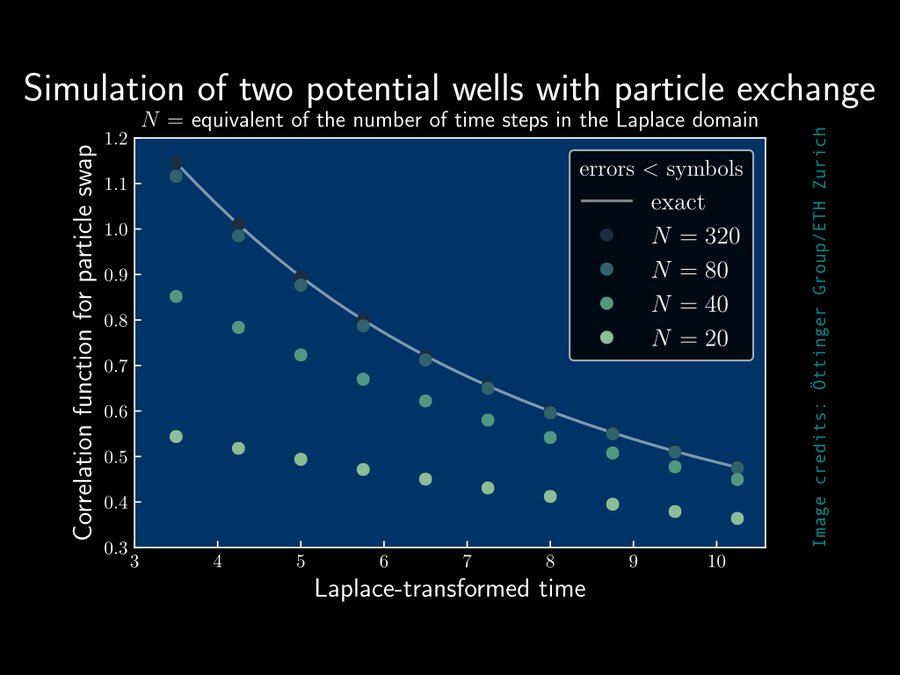
The group works on master equations for the coupling of quantum systems to classical environments. Possible applications range from quantum technology to fundamental particle physics. The plot shows a simulation of the Laplace-transformed dynamic correlation functions governed by the Von Neumann equation for density matrices.
Research Areas: Basic Science, Quantum Simulation
Research Approaches: Theoretical, Computational
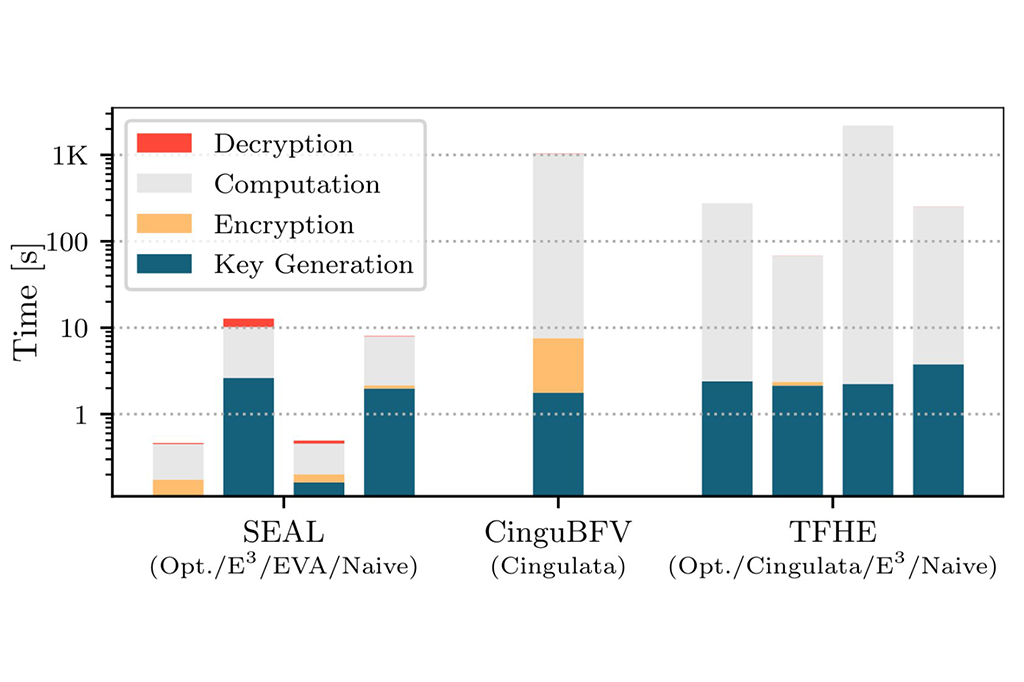
The Applied Cryptography Group works broadly across the field of cryptography, an underpinning technology enabling trust and security for the online society. The image from a recent external page publication shows the performance of different libraries performing Fully Homomorphic Encryption computations for different circuits.
Applied Cryptography group website
Research Areas: Basic Science, Quantum Communication, Quantum Computing
Research Approaches: Computational, Engineering, Theoretical
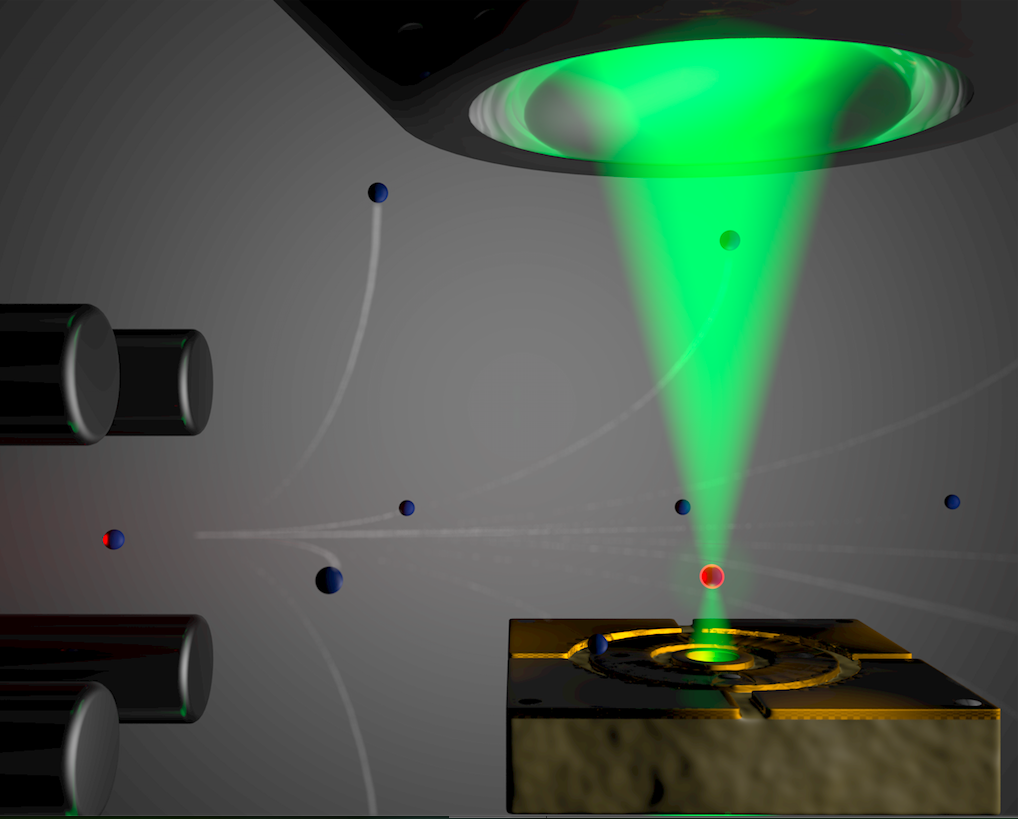
The group exploits the unique properties of nano-optical systems to address challenges in fundamental physics, biology and engineering.They also develop and study novel hybrid platforms to control the quantum dynamics of levitated mesoscopic particles, as the image shows.
Nanophotonic Systems Laboratory website
Research Areas: Basic Science, Quantum Sensing
Research Approaches: Experimental
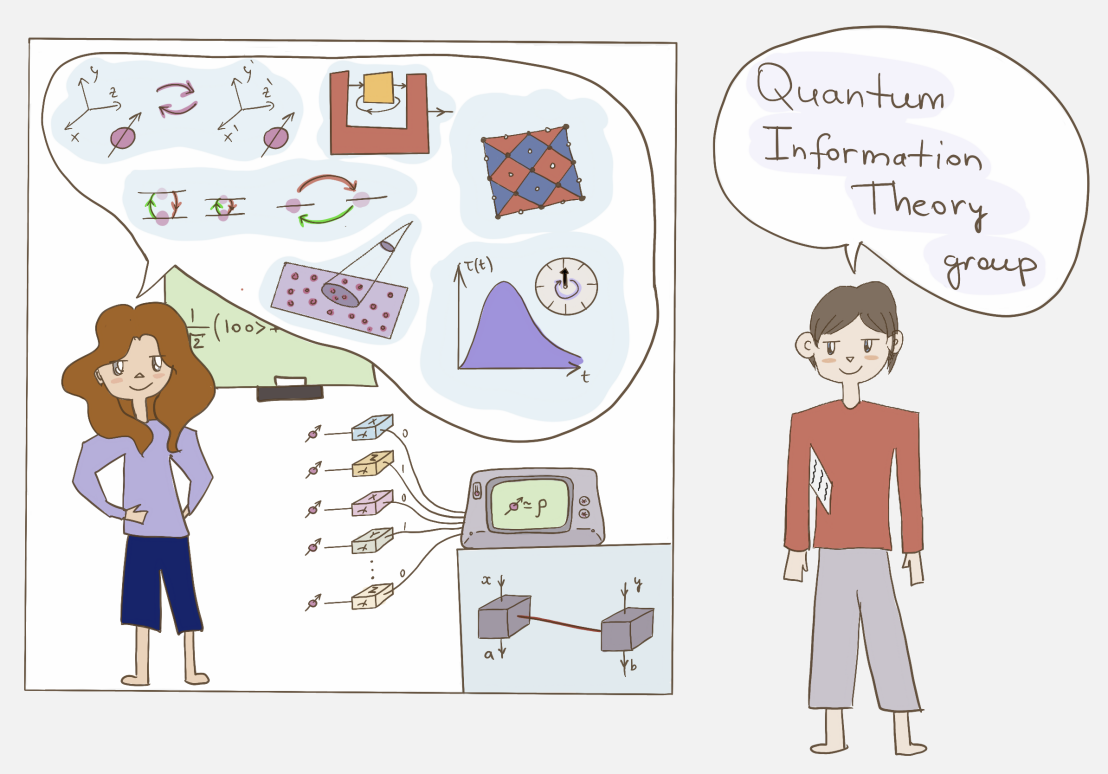
Information and physics are are deeply interwined! The Quantum Information Theory group studies these connections, from cryptography to thermodynamics and foundations of physics.
Quantum Information Theory group website
Research Areas: Basic Science, Quantum Communication, Quantum Computing
Research Approaches: Theoretical
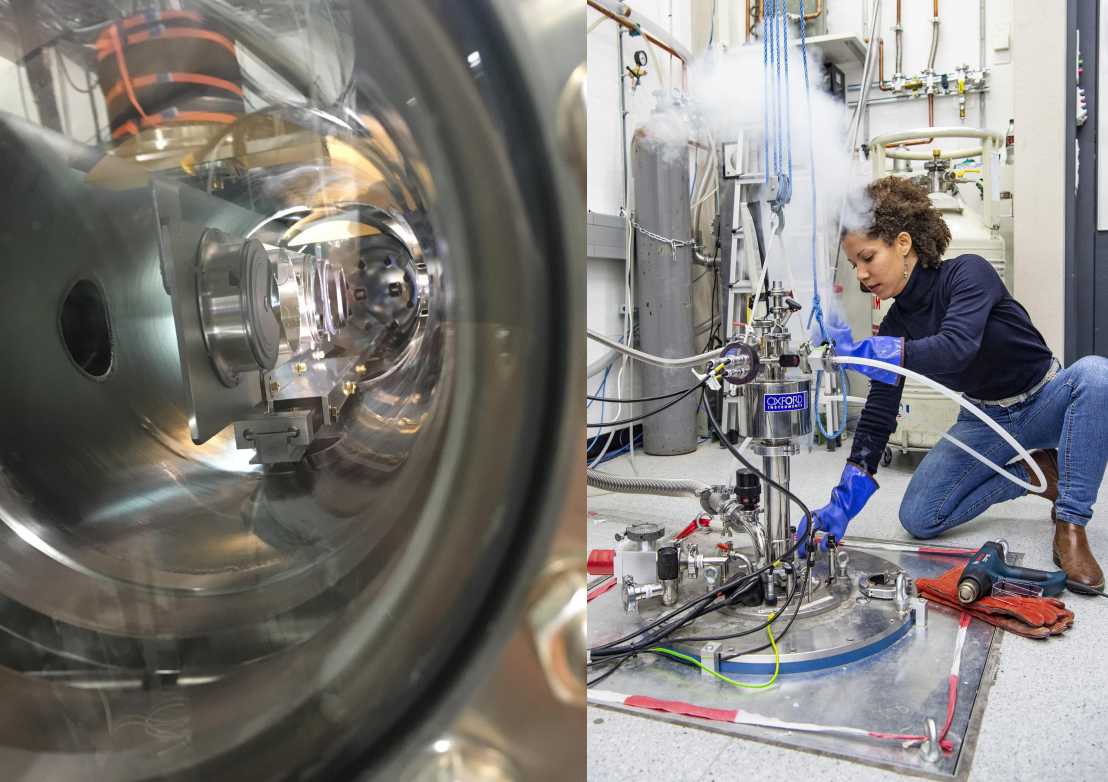
The group grows high-purity layer semiconductors via molecular beam epitaxy, and studies their properties. The picture on the left shows an ultra-high vacuum chamber where wafers are prepared before growth. The one on the right depicts a cryostat with base temperature of 250mK where PhD student Amina Ribeiro refilled liquid Helium to keep the superconducting magnet cold for measurements.
Advanced Semiconductor Quantum Materials group website
Research Approaches: Experimental
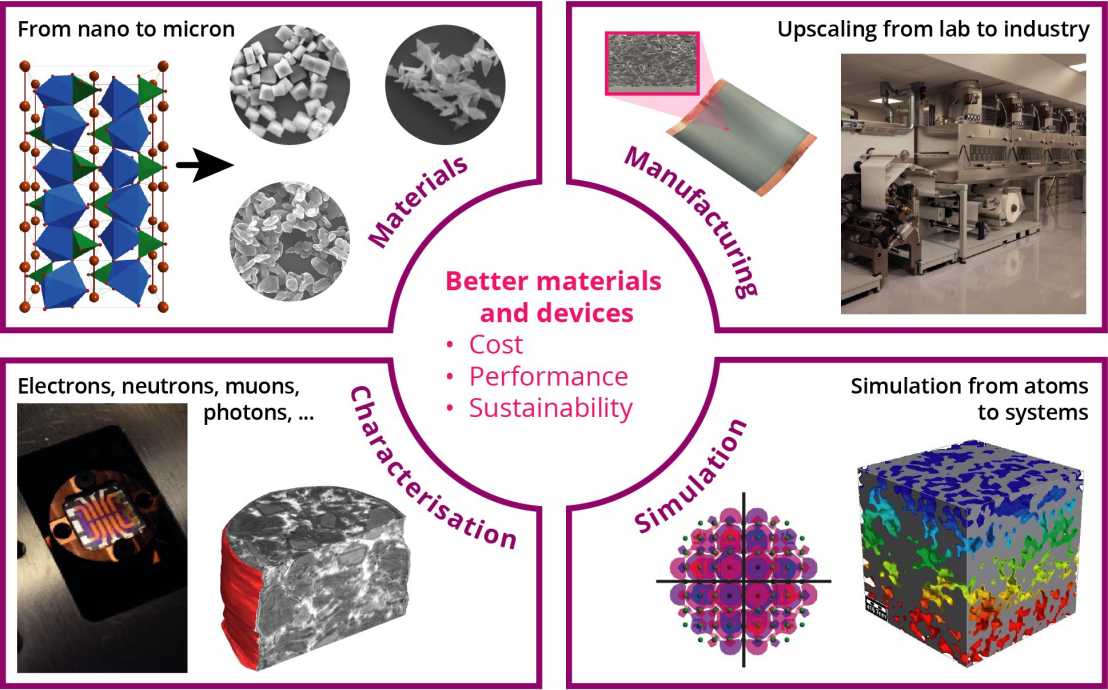
The group studies energy-related devices including solar cells, batteries, LEDs, and photonic crystals with the aim of improving their performance.
Materials and Device Engineering group website
Research Areas: Basic Science
Research Approaches: Computational, Engineering, Experimental
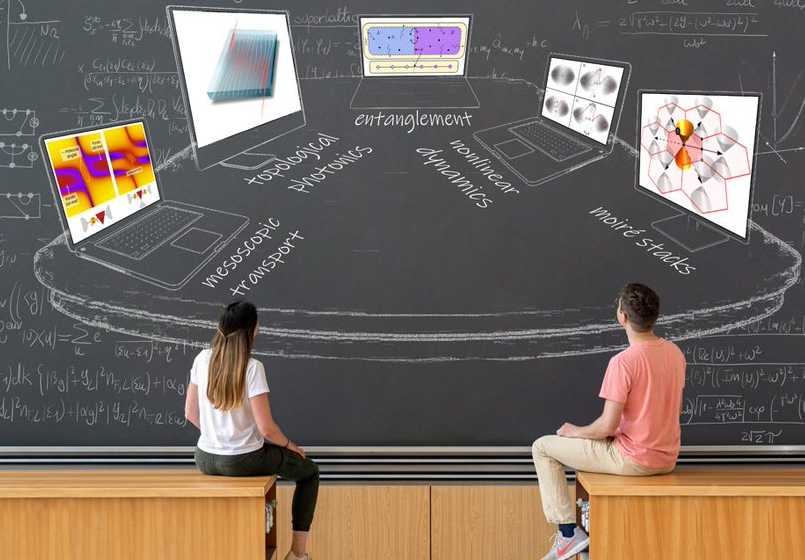
The group develops analytical models as well as their numerical implementations to study systems at the crossroad between condensed matter and quantum optics. The image shows the breadth of systems and topics that the group is currently investigating.
Electronic and Photonic Quantum Engineered Systems group website